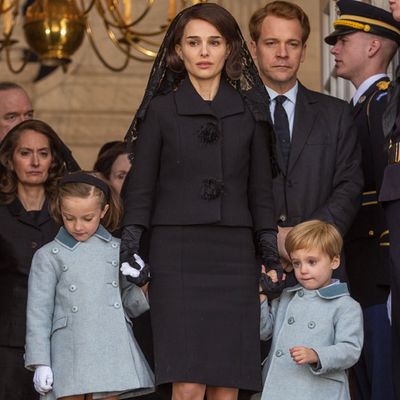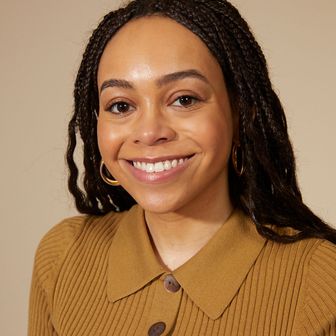
As Jackie interrogates the work that went into building the “Camelot” myth, a framing device details its origin: a Life magazine interview Jacqueline Kennedy (Natalie Portman) gave a week after her husband’s assassination, which sees the chain-smoking former First Lady spin falsehoods into the new truths of American history. Her unnamed interviewer (Billy Crudup) is the listening ear, writing furiously, and asking a handful of probing questions. At the end, Jackie takes the pen into her own hands, scratching out and adding in the words she wants the American people to read. The result is the magazine’s 1963 cover story, “For President Kennedy: An Epilogue,” with a final line that declares that “for one brief shining moment there was Camelot.”
The movie makes clear the image of “Camelot” and its glistening vision of the Kennedy years came from Jackie. But it also came from Theodore H. White, the real Life magazine reporter who wrote the profile. Onscreen, the interviewer is a hard newsman whose furrowed brow acts as a lie detector for Jackie’s dreamy fantasies. When the interview is finished, he murmurs a few words assuring Jackie that the story will work out, that her husband will be cast as an American martyr, that the musical metaphor will stick. Crudup says this somewhat begrudgingly, but in real life, White was an equal partner in the Kennedy myth-making.
Jackie hints at the piece’s Kennedy-friendly angle, but the movie’s scope doesn’t show how thoroughly manufactured it was. White wasn’t just any journalist; he’d fawned over Jack Kennedy on the campaign trail in a book called The Making of a President, 1960. And Life didn’t just send White to Jackie’s front door; she beckoned, even asking for him by name. As Joyce Hoffman’s book Theodore H. White and Journalism As Illusion puts it:
Theodore H. White was in a dentist’s chair on the Upper East Side of Manhattan on a Friday morning in late November 1963, when he learned that Jacqueline Kennedy had telephoned to say she needed him. One week had passed since President John F. Kennedy’s assassination in Dallas, and now his widow was beseeching the journalist, whom she considered an old friend, to come to Hyannisport. She had something she wanted Life magazine to say to America, and White, she insisted, had to bear the message.
So to Massachusetts White went, where he interviewed Jackie and then phoned in his copy from a maid’s room. Hoffman’s book says that Life held the presses — at a cost of $30,000 an hour — for the story to come in. Jackie supposedly overheard the magazine’s editors asking White to tone down the Camelot imagery and shook her head. White complied, and pushed for the metaphor to run as he wrote it.
The phone calls with Life aren’t prominent in the film, which is laser-focused on Jackie’s emotional life. White’s history as a Washington insider, whose access begot profiles overloaded with sympathy, is left out as well. But the image of Jackie huddled over the reporter’s notes, using her pen to pick and choose what she wants the world to know, stands. In his memoir, White wrote that he became “her instrument in labeling the myth,” later saying that she showed a desperate need to write her husband’s legacy, and not leave it in the hands of historians. She needed a journalist who was on her side, and White had shown himself to be one.
In December 1969, White gifted everything in his personal files related to the article — including his interview notes — to the John F. Kennedy Presidential Library. He asked that his scribbles (and Jackie’s prim revisions) not be released until one year after the First Lady’s death. The dozen pages of his notes are viewable online, as is the April 1964 letter he sent to Jackie with a typed version of his interview notes. “I place these notes, now, in your hands,” he wrote. “But I must advise you that I do not think they should be turned over to anyone else for publication.”
In between White’s words, some of Jackie’s margin notes were small, adding clarifying details about who said what, and even making sense of the writer’s sloppy handwriting and abbreviations. But these revisions could be the clearest picture of the former First Lady’s resourcefulness and meticulousness. She knew her family needed a Camelot myth, so she conjured one. She needed a reliable collaborator, so she called White.





